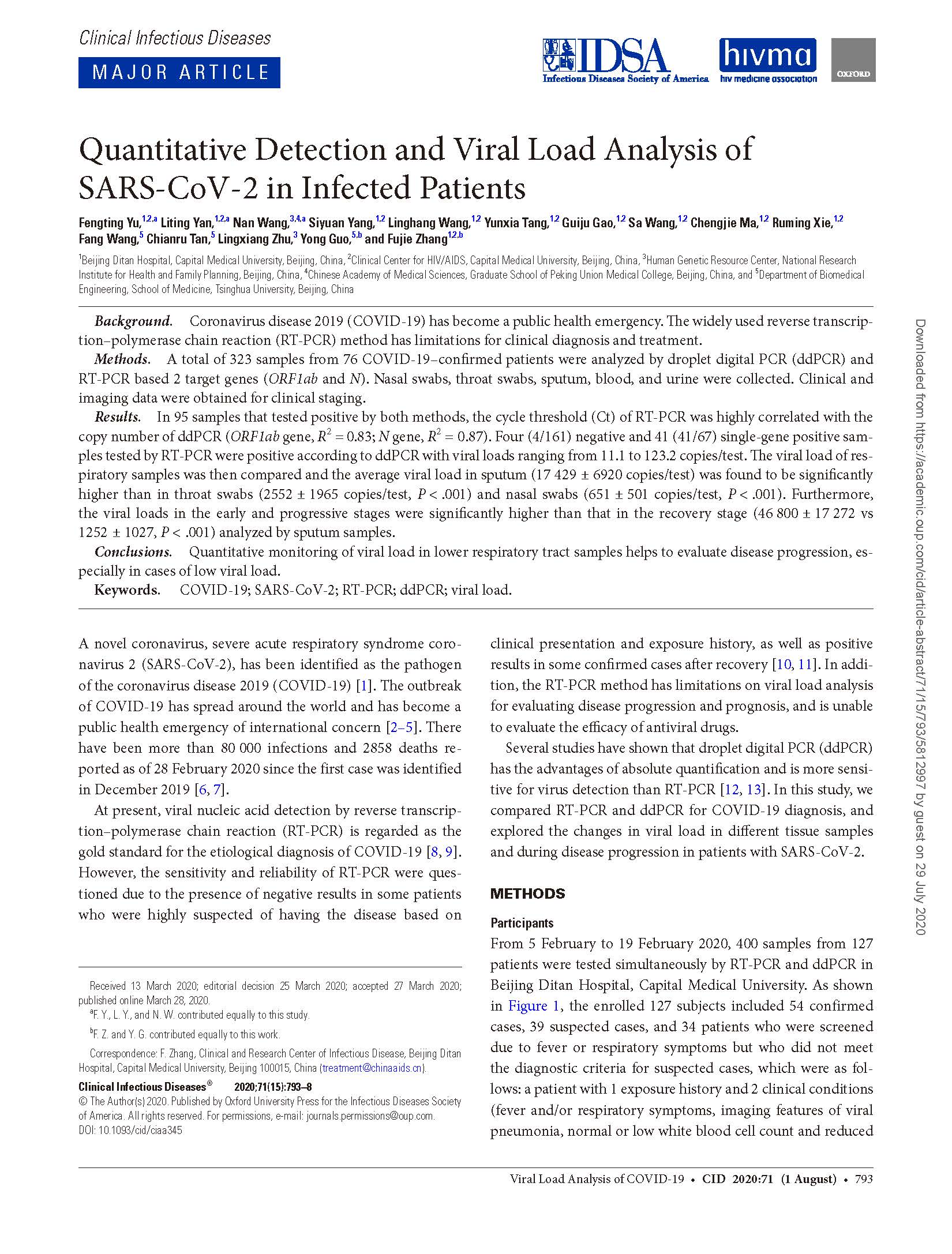Quantitative detection and viral load analysis of SARS-CoV-2 in infected patients
release date:2020-08-01

Background. Coronavirus disease 2019 (COVID-19) has become a public health emergency. The widely used reverse transcrip-tion–polymerase chain reaction (RT-PCR) method has limitations for clinical diagnosis and treatment.
Methods. A total of 323 samples from 76 COVID-19–confirmed patients were analyzed by droplet digital PCR (ddPCR) and RT-PCR based 2 target genes (ORF1ab and N). Nasal swabs, throat swabs, sputum, blood, and urine were collected. Clinical and imaging data were obtained for clinical staging.
Results. In 95 samples that tested positive by both methods, the cycle threshold (Ct) of RT-PCR was highly correlated with the copy number of ddPCR (ORF1ab gene, R2 = 0.83; N gene, R2 = 0.87). Four (4/161) negative and 41 (41/67) single-gene positive sam-ples tested by RT-PCR were positive according to ddPCR with viral loads ranging from 11.1 to 123.2 copies/test. The viral load of res-piratory samples was then compared and the average viral load in sputum (17 429 ± 6920 copies/test) was found to be significantly higher than in throat swabs (2552 ± 1965 copies/test, P < .001) and nasal swabs (651 ± 501 copies/test, P < .001). Furthermore, the viral loads in the early and progressive stages were significantly higher than that in the recovery stage (46 800 ± 17 272 vs 1252 ± 1027, P < .001) analyzed by sputum samples.
Conclusions. Quantitative monitoring of viral load in lower respiratory tract samples helps to evaluate disease progression, es-pecially in cases of low viral load.
See all: https://doi.org/10.1093/cid/ciaa345
 Background. Coronavirus disease 2019 (COVID-19) has become a public health emergency. The widely used reverse transcrip-tion–polymerase chain reaction (RT-PCR) method has limitations for clinical diagnosis and treatment.
Background. Coronavirus disease 2019 (COVID-19) has become a public health emergency. The widely used reverse transcrip-tion–polymerase chain reaction (RT-PCR) method has limitations for clinical diagnosis and treatment.